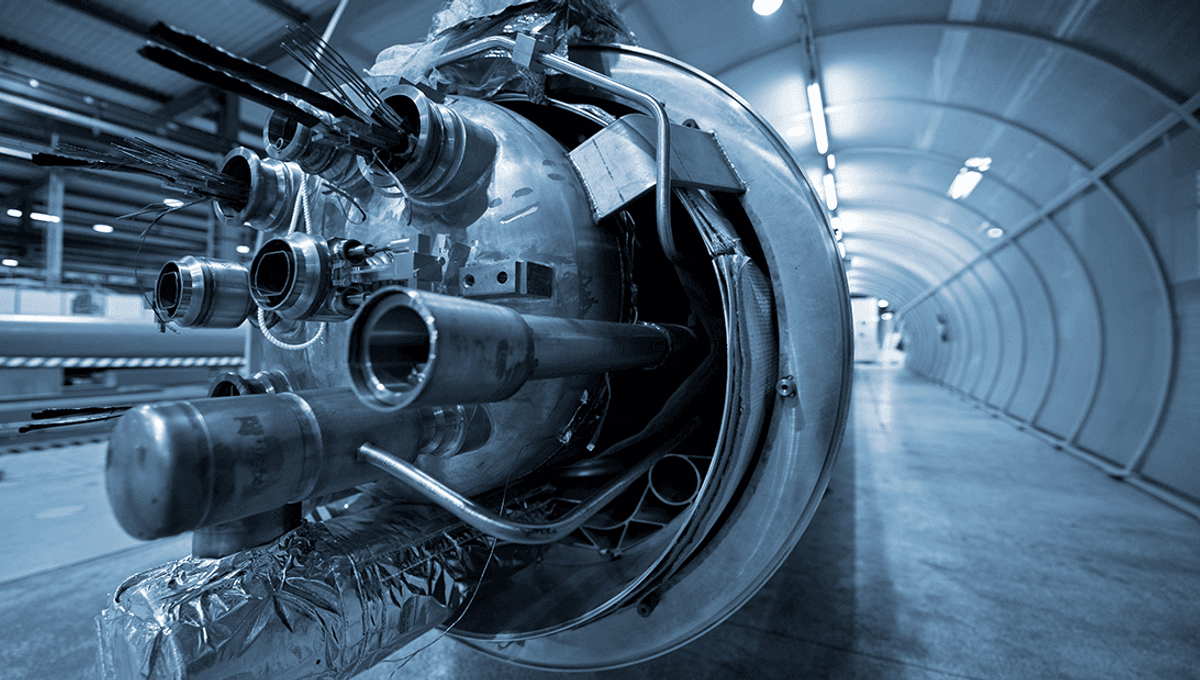
Scientists at the European Organization for Nuclear Research (CERN) have observed an incredibly rare event, which could possibly hint at new physics beyond the Standard Model.
There’s nothing particle physicists like more than crashing particles together and seeing what comes out of the mess. Such experiments can help us find evidence of particles and processes predicted by the Standard Model of particle physics – such as the Higgs Boson – or sometimes hint that we are missing something, such as the decay of the B meson.
“The Standard Model describes the fundamental forces and building blocks of the universe. It is a highly successful theory, but there are several mysteries of the universe that the Standard Model does not explain, such as the nature of dark matter and the origins of the matter–antimatter imbalance in the universe,” Professor Mark Thomson, chair of the Science and Technology Facilities Council and contributor to the NA62 experiment, explained in 2020.
“Physicists have been searching for theoretical extensions to the Standard Model. Measurements of ultra-rare processes provide an exciting avenue for exploring these possibilities, with the hope of discovering new physics beyond the Standard Model.”
One ultra-rare event being probed by the NA62 experiment is the decay of a charged kaon into a charged pion and a neutrino and anti-neutrino pair. Kaons, also known as K mesons, are strange (and sometimes anti-strange) beasts. Protons and neutrons are usually made up of three quarks. For protons that’s two up quarks and one down quark, for neutrons, it’s one up quark and two down quarks. Kaons contain two quarks, combinations of up quarks and anti-up quarks, strange and anti-strange quarks.
Charged kaons (K+) are made of an up quark and an anti-strange quark. They are of particular interest as their decay is very precisely predicted by the Standard Model. According to these predictions, fewer than 1 in 10 billion charged kaons will decay into a charged pion and a neutrino-antineutrino pair (K+ → π+νṽ). The NA62 experiment attempts to search for this decay by colliding a high-intensity proton beam into a stationary target, which then produces secondary particles that can be detected, measured, and identified (though neutrinos are identified through missing energy).
In 2020, the team reported evidence of this rare form of decay being detected by the experiment. Now, after far more collisions, including higher-energy collisions, the team reports a 5-sigma detection, meaning there is a 0.00006 percent chance that the detection is a statistical fluke.
“With this measurement, K+ → π+νṽ becomes the rarest decay established at discovery level – the famous 5 sigma,” Cristina Lazzeroni, Professor in Particle Physics at the University of Birmingham, said in a statement. “This difficult analysis is the result of excellent teamwork, and I am extremely proud of this new result.”
While the decay is rare, as predicted by the Standard Model, it is around 50 percent higher than expected, occurring about 13 times in 100 billion. It is unclear what causes this discrepancy between the Standard Model’s predictions and the results observed, with possible explanations including new particles or new physics, both of which are pretty exciting.
“This is the culmination of a long project started more than a decade ago. Looking for effects in nature that have probabilities to happen of the order of 10-11 is fascinating and challenging,” Professor Giuseppe Ruggiero, from the University of Florence, added. “After rigorous and painstaking work, we have got a stunning reward to our effort and delivered a long-awaited result.”
While the team has announced and presented results at CERN, full papers and further experiments will follow.
The team presented their findings at a CERN EP seminar.
Source Link: Incredibly Rare 13 In 100 Billion Event Seen At CERN Particle Accelerator